The ‘Kingdom of Stones’ on Sangu banks
The Sangu river, winding through the hilly district of Bandarban, is an embodiment of nature's beauty, its crystal-clear waters flowing serenely past steep hills and lush greenery. Yet, as one meanders along its banks, a spectacle emerges: an array of stones that captivates the imagination and whispers tales of magic and mystery.
Locals refer to this enchanting realm as the "Kingdom of Stones", a place where granite giants stand sentinel over the flowing waters, embodying characters from ancient myths and legends.
Is it a royal tale, they wonder, or a miracle born from the depths of a natural disaster? Many questions linger in the air, fueling the curiosity of those who venture to this extraordinary locale.
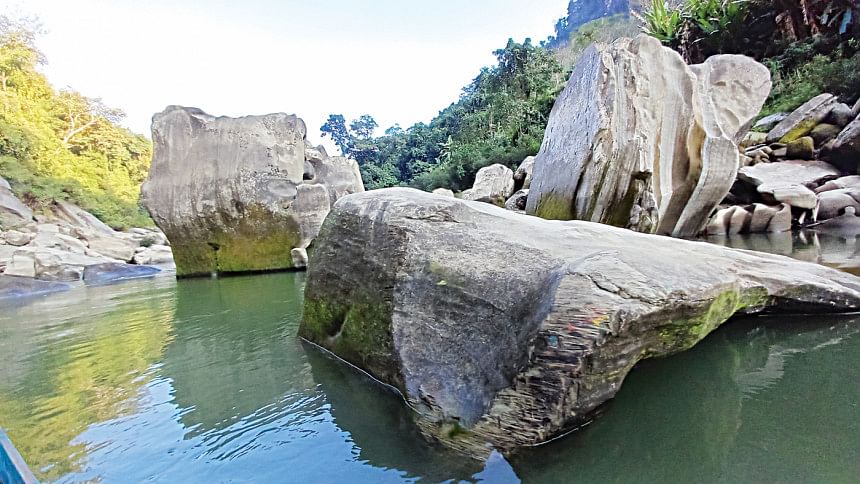
MAJESTIC GUARDIANS
The allure of the Sangu lies not only in its serene beauty but in the narratives woven around the stones that grace its banks. As you approach the stony kingdom, you are greeted by two immense boulders that rise majestically from the riverbank. Locals affectionately call them Raja and Rani -- king and queen. They stand like guardians, casting a protective shade over the river, while the current flows past their stony forms. Around them, the stone effigies of generals, soldiers, and washers are scattered, each imbued with a life of its own.
"Upon entering this stony kingdom, a shiver runs through your heart, and it feels as though you have become part of a story of nature," says a local villager, capturing the enchantment that envelops all who set foot in this realm.
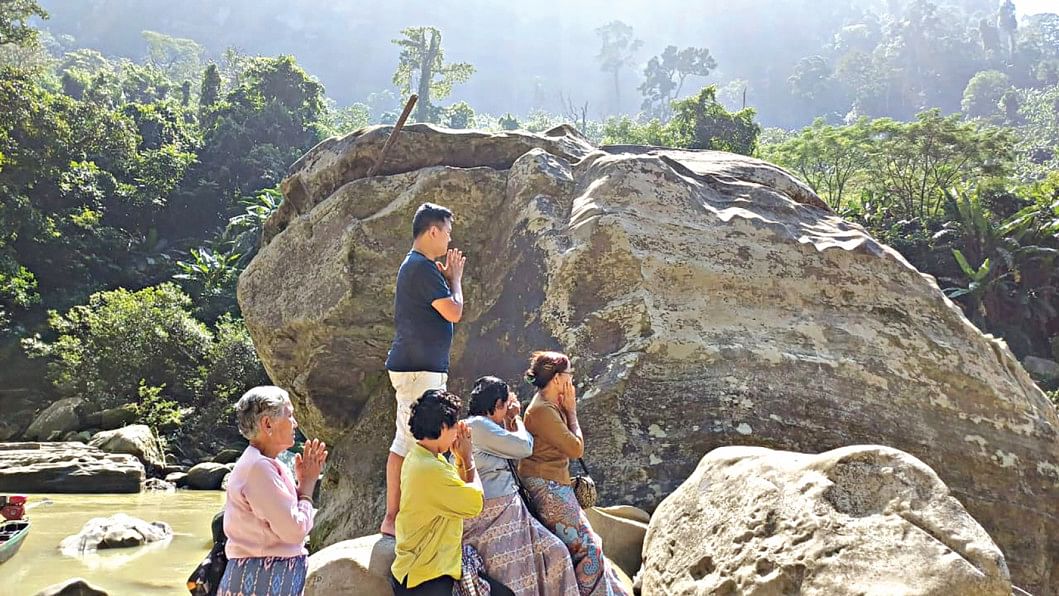
As the river bends and curves, the whisper of the water beckons, and tales of the stones come alive. The general, whose stone form commands respect, is said to be the protector of the river and its surrounding lands. Those who wander near the shallow waters can hear the echoes of everyday life told through the washer stone, a testament to the daily rituals of the villagers. Here, the stones seem to transcend mere inanimate objects; they are living testaments to the artistry of nature itself.
Nestled in a quiet corner of the river, one finds the Cook's Stone, resembling a busy chef preparing a meal by the riverside. According to the locals, this stone embodies the spirit of a food-loving cook, forever engaged in the culinary delights of the kingdom. Nearby stands the Pitcher Stone, formed into the shape of eleven pitchers, believed to be the king's water vessel. The legends tell of a fisherman who ventured deep into the Sangu, only to witness the sky darken ominously, and the waters began to rage. As he gazed into the tumultuous depths, he beheld the ghostly outlines of brass pitchers emerging from the water.
Some believe these pitchers are the cursed possessions of a princess, thrown into the river to shield them from greedy hands, locals recount. Over time, these vessels transformed into stones, remnants of a forgotten civilisation hidden among the hills.
Today, the pitcher stones continue to mesmerise visitors, their reflections shimmering in the clear waters of the Sangu.
HISTORICAL SIGNIFICANCE, LOCAL LIFE
The Thindu area, where this magical kingdom resides, is not only renowned for its stones but also for the vibrant lifestyle of its indigenous people. The relationship between the villagers and the Sangu is profound, intertwining their lives and traditions.
Visiting the Kingdom of Stones is more than just a journey; it is an experience that ignites the spirit of adventure and wonder. Raja Pathor is nestled upstream along the Sangu. Begin by hiring a "Chander Gari (locally improvised vehicle)" or catching a bus from Bandarban Sadar to Thanchi Bazar, then enlist the help of a local guide and board a rented boat at the market ghat.
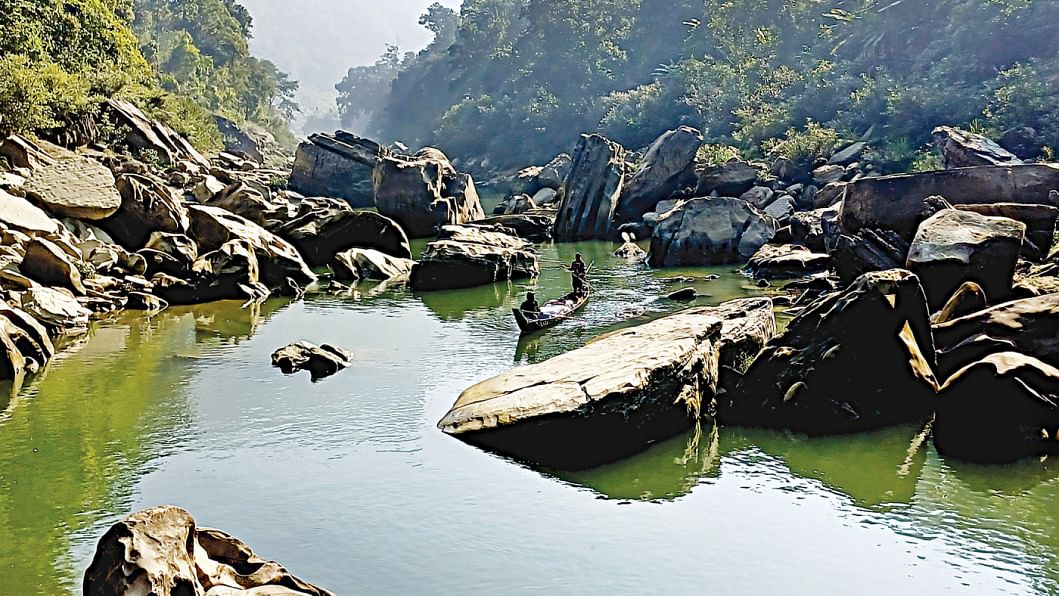
Alternatively, you can reach the Raja Pathor area by renting a motorcycle or Chander Gari from Alikadam, traversing through Thanchi Bazar.
As you glide along the flowing river, listening to its gentle gurgling and surrounded by the stunning hills that rise on either side, your destination will come into view in approximately one to one and a half hours.
For those who love nature, it is an unforgettable destination that transports you to a realm where the ordinary becomes extraordinary. "One feels as if they have entered a kingdom where nature tells its own stories," says Zia Rajib, a tourist.
The historical significance of the Sangu adds another layer to this enchanting tale. An academic and researcher, Mongkya Shoe Nu (Navi), highlights the roots of the stones in the Marma language, explaining that Bongdow Kyaklung refers to the "head scarf" of the stone, a term that has evolved over time. Recently, nature enthusiasts have translated this into Bangla, adopting the name Raja Pathor, or King Stone, which has gained popularity among visitors.
Delving into the prehistoric past, Mongkyaw Shoe Nu references an earthquake that struck on April 2, 1762, measuring between 8.5 and 8.8 on the Richter scale. The earthquake devastated the northern part of the then Arakan Kingdom and the southern regions of the Indian subcontinent, causing landslides that formed the kingdom of stones we see today. "The earthquake created this magnificent landscape," he says.
For the villagers living alongside the Sangu, these stones are not merely formations of rock; they embody a sense of miraculous power. "Those who earn their living from the Sangu must worship or pray before passing through this stone area," shares Umangching Marma, 35, who has been navigating boats here for over a decade.
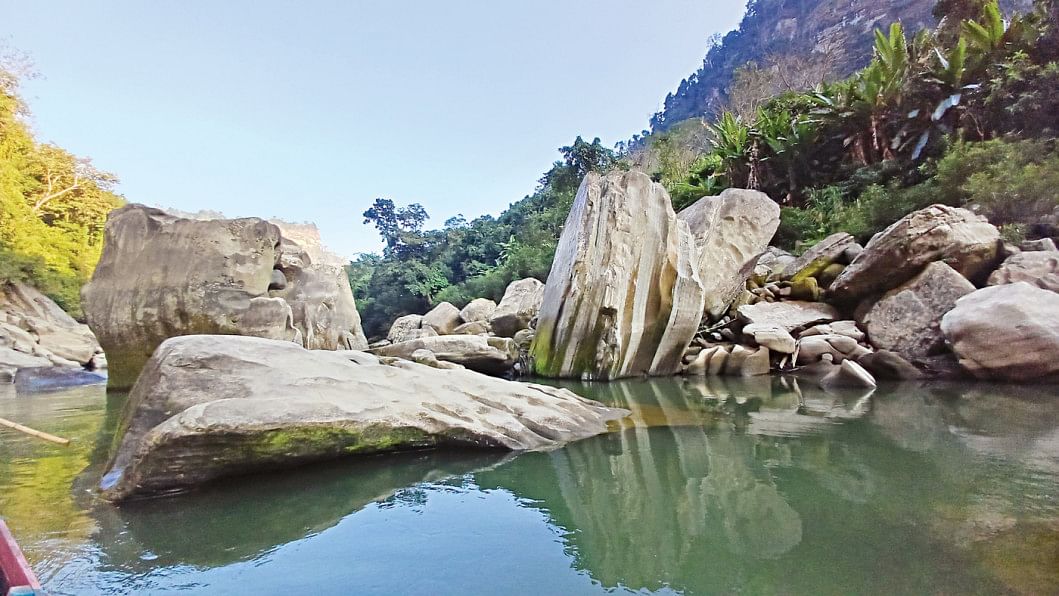
Near Raja Pathor lies Thindu Para, a village of about 150 families where the Marma community predominates, along with Khumi, Mro, and Tripura communities. The village head, Kraning Aung Marma, notes the establishment of a local market, Thindu Bazaar, bringing together the cultures that flourish in this area.
To further delve into the legends surrounding the Kingdom of Stones, one must listen to the wisdom of the village's eldest resident, Ngamong Marma, who at 82 years old embodies the history of the place. "I was born in this village. My mother, father, and all my ancestors have lived here," he says.
Reflecting on the changes that time has wrought, Ngamong shares, "Now the water of the Sangu has diminished significantly. Engine-powered boats operate on the river, making travel much easier for people. In our time, we could not travel by any boat on the river. There was so much water and current that walking was the safest option."
Ngamong recounts the perilous nature of the area known as Asang Bongdow kyaklung, where many lives have been lost due to the river's treachery. "It is said that if anyone transports trees, bamboo, or any crops produced from the hills without worshipping or paying respect to Bongdow they will inevitably fall into some trouble," he warns.
True to his words, these correspondents saw a family of five praying in front of a stone.
The eldest of the group, 69-year-old Hla Yoi Ching Marma, said, "Since childhood, we have heard from our ancestors that this stone possesses an invisible power and spiritual qualities. It was not easy to come here, but we are glad that we did it."
As the sun sets over the Sangu, painting the sky in hues of gold and crimson, the Kingdom of Stones stands resolute. This magical place is a sanctuary where nature, culture, and legend intertwine, inviting all who seek to uncover its secrets. Each visit deepens the allure of the Sangu, where the whispers of the past echo in the rustling leaves and the flowing water, beckoning the curious to return time and again, to listen, to wonder, and to revel in the enchantment of the Kingdom of Stones.


 For all latest news, follow The Daily Star's Google News channel.
For all latest news, follow The Daily Star's Google News channel. 


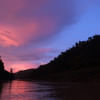
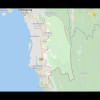
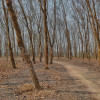
Comments